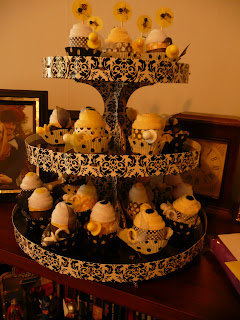 |
This was their home
|
The holidays which came in a steady flow this fall repeatedly brought me back to the fall of 2012, the season which marked the beginning of the end of my parents' lives as they had known them together for 69 years. It is still shocking to think of all that has happened in this last year both in the family of my birth and in the family to which I committed myself 13 years ago. I will leave the list of occasions which brought me to both the heights and the depths of human experience to another reflection. I will focus on recent observation of a feature of human grieving.
I am thinking again of my parents and how their lives, as they knew them came to a screeching halt in October of last year when my mother, age 88 and experiencing dementia, was hospitalized for a week. This was followed by a month of recuperation and rehabilitation in a nursing home and then arranging for her to live in an assisted living facility in their town. My father was a devoted husband in every way. The quality of their relationship was recently described by a psychiatrist friend as a 'zipper marriage' - devotion to each other that had a shadow side of shutting others out. It was only my father's realization that he could no longer cope with the day to day reality of my mother's dementia as he experienced his own diminishment in strength and spoke of fully expecting his own death within the year. He died on April 17 at the age of 91 following two and half months of in-home Hospice care and one week in a Hospice residential facility.
 |
| alabaster vase with carved stone flowers 5 inches high - Italy |
I am thinking of how their way of life just seemed to explode in a manner of seconds. All of their carefully arranged routines, relationships, obligations, support systems could no longer suffice to maintain things as they had always been. This was crushing to my father.
In what followed my father's death the beautiful objects, so lovingly, artistically arranged and maintained were propelled from their set order or place; off into the unknown universe; a diaspora of all that was their life. What had been an enduringly cohesive whole atomized, exploded, fractured into shards.
Before it all went beyond reach I grabbed at some of the shards, little precious objects that were fixtures in their home and present to me my whole life. A few appear here. There are others: my Dad's slide rules in their leather cases so often seen on his drafting table, the little leather bound boxed chess set no bigger than a small paperback book which he carried with him to the Pacific in WWII and brought back in a duffle crammed with every letter he had received from my mother, a pocket knife, a watercolor painted by my mother. Each item of little value except to me and perhaps, this is my hope, to my children and grandchildren after me.
However I find that when I look upon them I mourn the loss of the whole. Each object in their home was placed in artful relationship to others, a grand collection in reflection of their lives. These objects, in isolation from the whole, seem to have lost something. It does come to me that the loss represented in these objects seemingly removed from the ground of their being is only a reflection of my sense of loss, of my having been propelled into a new way of being, a new stage of life. No longer in this world is there anyone who came before me. who remembers before me, who can tell the old stories. I am now the elder and that has been a bit of a shock. I feel the burden of holding the stories and the need to keep sharing them, especially with the little ones so that when they receive the gift of these precious objects they will know something of their meaning to those who loved them so dearly.
 |
| Helmut Eric Nimke with family March, 2013 |


.JPG)


.JPG)
.JPG)
.JPG)



























